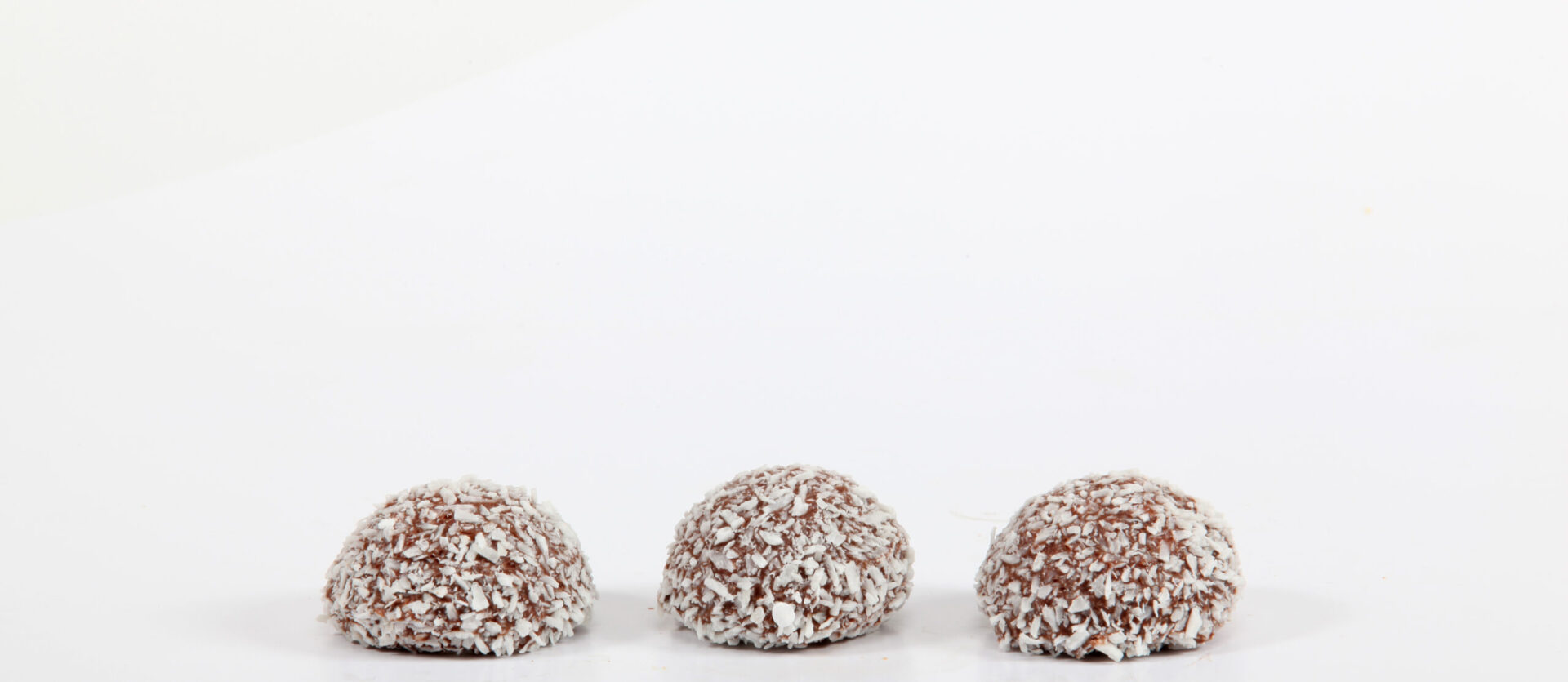When rum meets dessert, magic happens.
A Danish creation from the days of colonization.
Each one of these babies is rolled by an islander. An islander with deep roots here. With the love that only a mother could have for her child.
So you are holding a little roam-soaked baby in your hand. Enjoy.
The Rich History of Danish Rum Balls: From Tradition to Treat
Danish rum balls, known in Denmark as “romkugler,” are a delectable delight cherished not only in Denmark but across the globe. These bite-sized treats, with their rich cocoa flavor and hint of rum, have a fascinating history deeply rooted in Danish culinary tradition. As we embark on a journey through time, we uncover the origins and evolution of Danish rum balls, exploring how they became a beloved delicacy enjoyed by generations.
Origins of Danish Rum Balls:
The story of Danish rum balls traces back to the late 19th century when Denmark experienced a surge in culinary creativity and innovation. While the exact origins remain somewhat obscure, it’s believed that Danish rum balls were inspired by a confluence of influences, including Danish pastries and European desserts.
One theory suggests that Danish rum balls were born out of the desire to repurpose leftover cake scraps and stale bread. Bakers would combine these remnants with cocoa powder, sugar, and a splash of rum, creating a moist and flavorful mixture. The addition of rum not only enhanced the taste but also served as a preservative, allowing the treats to last longer.
Evolution Over Time:
Initially regarded as a humble treat enjoyed by locals, Danish rum balls gradually gained popularity beyond Denmark’s borders. As Danish immigrants spread across the world, they brought with them their cherished culinary traditions, including the beloved romkugler. And of course, these babies landed in the Danish West Indian island of St. Thomas.
Over the years, Danish rum balls underwent subtle transformations, with bakers experimenting with different ingredients and flavor variations. While the classic recipe remains a staple, modern twists, such as incorporating nuts, coconut, or spices, have emerged to cater to diverse palates.
Cultural Significance:
In Denmark and The Virgin Islands, rum balls hold a special place in culinary culture, particularly during the festive season. Traditionally, families gather during Christmas to bake a variety of treats, with romkugler being a must-have on the dessert table. The act of making rum balls together fosters a sense of togetherness and nostalgia, evoking cherished memories of past holidays.
Beyond Christmas, Danish rum balls are enjoyed year-round, whether as a sweet indulgence with afternoon coffee or a treat to satisfy late-night cravings. Their versatility and portability make them a popular choice for picnics, parties, and celebrations of all kinds.
Regional Variations:
While Danish rum balls share a common heritage, regional variations abound, reflecting the diverse tastes and preferences of different communities. In some parts of Denmark, bakers may add chopped nuts or dried fruits for added texture and flavor. Others may opt for a “lighter touch” of rum, allowing the cocoa to shine through. We go for a “heavier touch”.
Outside Denmark, Danish rum balls have inspired countless adaptations, each influenced by local ingredients and culinary traditions. In Sweden, for example, a similar treat known as “chokladbollar” is enjoyed, albeit with slight variations in recipe and presentation.
Contemporary Appeal:
In recent years, Danish rum balls have experienced a resurgence in popularity, both in Denmark and abroad. With the rise of social media and food blogging, these delightful treats have captured the attention of a new generation of food enthusiasts eager to explore international cuisines.
Artisanal bakeries and specialty shops now offer gourmet versions of Danish rum balls, elevating them from a simple homemade treat to a sophisticated delicacy. From vegan and gluten-free options to exotic flavor combinations, the possibilities are endless, catering to a diverse and discerning clientele.
Conclusion:
In conclusion, Danish rum balls embody the rich tapestry of Danish culinary heritage, blending tradition with innovation to create a timeless treat beloved by all. From humble beginnings to global acclaim, their journey is a testament to the enduring power of food to connect us across cultures and generations.
As we savor each bite of these delectable delights, let us not only enjoy their exquisite taste but also appreciate the centuries-old tradition and craftsmanship that went into their creation. Whether enjoyed as a festive indulgence or a daily delight, Danish rum balls are sure to leave a lasting impression on all who taste them.
To check our island-inspired, Danish recipes come find us:
We’re located in an old historic building in downtown Charlotte Amalie dating back 200 years. So we hopefully are capturing the very soul of the island in each rum ball.
Our factory is off Main Street in downtown Charlotte Amalie in St. Thomas. So once you pass all the jewelry shops and tourist traps, head one street deeper into the town and you’ll end up on Back Street (aka Wimmelskafts).
If you’re on a ship, have the taxi driver drop you off on Main Street and you should be good to go. If you are driving into town, park at Fort Christian and we’re a 4-5 minute walk.
Our operation isn’t massive, but we make a lot of those little rum treats.
We are only offering private tours of the facility at this time so shoot us a message and we can arrange for your visit.
